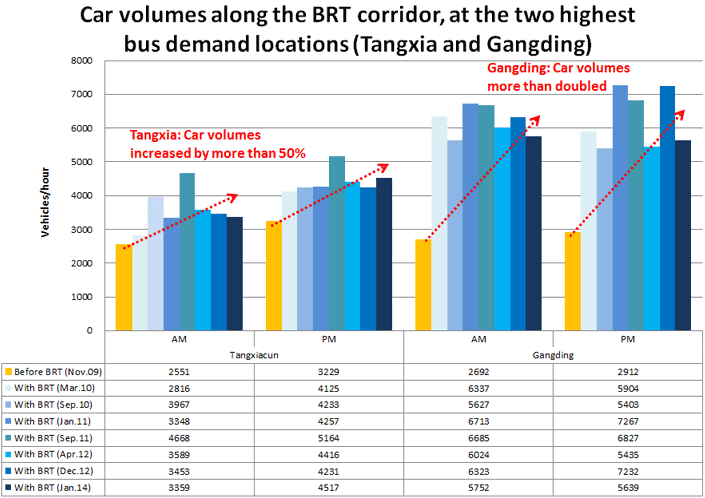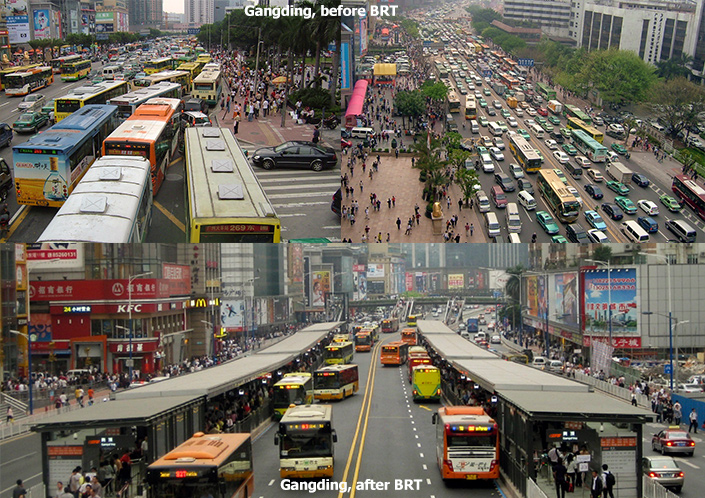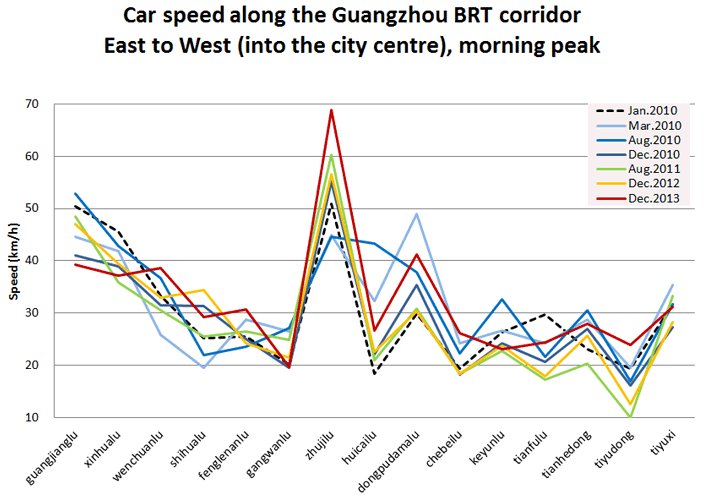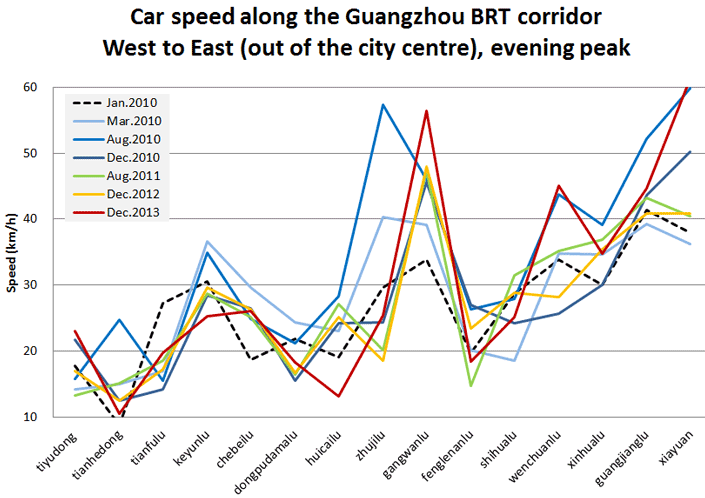Institute for Transportation and Development Policy
Promoting sustainable and equitable transportation worldwide
Car traffic increased in both speed and volume after BRT.
BRT improves both bus speeds and general traffic
15 February 2014
Although the primary reason for implementing BRT is to improve bus speed and performance, the Guangzhou BRT shows that it is possible to make dramatic improvements to bus performance without adversely impacting mixed traffic. On the contrary, ITDP's multi-year surveys in Guangzhou show that both volume and speed of car traffic has improved since the BRT opened in February 2010, even as traffic has rapidly deteriorated on non-BRT roads. The three key reasons for the improvement in mixed traffic are:
- BRT solves the problem of bus stop congestion, which causes major interference with cars and other modes at bus stops.
- With BRT, more than 20 safe pedestrian crossings have been added, removing conflicts between vehicles and crossing pedestrians along the BRT corridor.
- With BRT, intersections have been improved to benefit not just BRT, but also mixed traffic.
The increases in traffic in the BRT corridor occurred immediately after the BRT system opened, indicating that trips were diverted from other roads, especially the largely parallel Huangpu Avenue, to use the BRT corridor. The speed surveys are shown for the morning and evening peak in the peak direction (into the city in the morning, and out of the city in the evening).
These results show that BRT cand provide a 'win-win' for policy-makers keen to implement BRT without adversely impacting mixed traffic. Gangding is one of many examples along the Guangzhou BRT corridor of how BRT can benefit all modes by solving the problem of bus stop congestion. 'Before' and 'after' photos of Gangding are provided below.




ITDP's BRT impact analysis is ongoing, and now includes a multi-year set of data on a range of topics from before the BRT was implemented and every year during the BRT operation. For the results outlined above, for each sample set a car was hired and followed the general traffic flow during the morning and evening peak traffic hours on 4 weekdays and 1 weekend. For information, maps, photos and data on the Guangzhou BRT seewww.worldbrt.net.
ITDP's BRT impact analysis is ongoing, and now includes a multi-year set of data on a range of topics from before the BRT was implemented and every year during the BRT operation. For the results outlined above, around 1,100 bus passengers were surveyed in each of the BRT surveys, and 300 bus passengers in each of the control corridor surveys. For information, maps, photos and data on the Guangzhou BRT seewww.worldbrt.net.